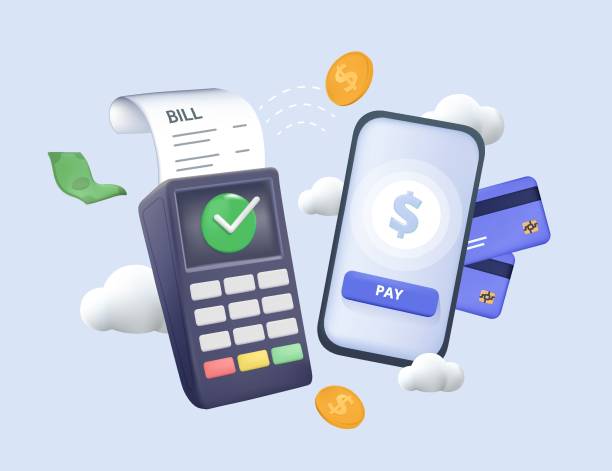In the world of cryptocurrencies, Bitcoin mining holds a legendary status. It’s the process by which new bitcoins are introduced into circulation and a critical component of the blockchain ledger’s maintenance and development. However, with the ever-changing landscape of cryptocurrency economics, many prospective miners and investors ask, “Is Bitcoin mining still profitable?”
The Basics of Bitcoin Mining
Before diving into the economics, let’s briefly touch on what Bitcoin mining entails. Bitcoin mining involves solving complex cryptographic puzzles to validate transactions on the Bitcoin network. Miners use powerful hardware to perform these calculations, and in return, they are rewarded with newly created bitcoins and transaction fees.
Initial Costs: Hardware and Setup
One of the first hurdles any prospective Bitcoin miner must overcome is the initial setup cost. This includes purchasing specialized mining hardware known as ASICs (Application-Specific Integrated Circuits). Unlike the early days of Bitcoin, when you could mine using a regular computer, today’s mining requires high-performance machines designed specifically for this purpose.
The price of ASIC miners can range from a few hundred to several thousand dollars, depending on their power and efficiency. Additionally, miners must consider the cost of setting up and maintaining their mining rigs, including cooling systems and housing infrastructure to manage the heat generated by these powerful machines.
Operational Costs: Electricity and Maintenance – Bitcoin Mining
Once the initial setup is complete, operational costs become a significant factor in determining the profitability of Bitcoin mining. The primary operational cost is electricity. Bitcoin mining is energy-intensive, and the electricity cost can vary widely depending on your location. For instance, countries with low electricity rates, like China and Iceland, have been popular hubs for mining operations.
On top of electricity costs, miners must account for maintenance expenses. This includes regular upkeep of the hardware to ensure it runs efficiently and any repairs that might be necessary. The lifespan of mining hardware can also impact profitability; as equipment ages, it becomes less efficient and may need to be replaced.

The Reward: Bitcoin Block Subsidy and Transaction Fees
The potential rewards from mining are a critical part of the profitability equation. When a miner successfully adds a new block to the blockchain, they receive a block subsidy and transaction fees from the transactions included in that block. As of now, the block subsidy is 6.25 bitcoins per block. However, this subsidy halves approximately every four years in an event known as the “halving.”
The last halving occurred in May 2020, and the next one is anticipated in 2024. Each halving reduces the number of new bitcoins entering circulation, which can impact miners’ revenue. Transaction fees, although relatively small compared to the block subsidy, also contribute to a miner’s earnings. These fees can fluctuate based on network congestion and transaction volume.
Difficulty Adjustment and Hash Rate
Bitcoin’s mining difficulty adjusts approximately every two weeks based on the network’s total hash rate, which is the combined computational power of all miners. When more miners join the network, the hash rate increases, making it more difficult to mine new blocks. Conversely, if miners leave the network, the difficulty decreases.
This dynamic ensures that blocks are added to the blockchain approximately every ten minutes, maintaining a consistent issuance of new bitcoins. However, the difficulty adjustment can impact profitability. If too many miners are competing, the chances of successfully mining a block decrease, potentially reducing individual miners’ earnings.

Market Conditions: Bitcoin Price Volatility
Bitcoin’s market price is another crucial factor in mining profitability. The price of Bitcoin is notoriously volatile, and significant price fluctuations can impact miners’ bottom lines. When the price of Bitcoin rises, the value of the block reward and transaction fees in fiat currency increases, potentially making mining more profitable. Conversely, a decline in Bitcoin’s price can diminish profitability.
Miners must be prepared for market volatility and consider it when calculating potential returns on investment. Many miners opt to hold (or “hodl”) their mined bitcoins in anticipation of future price increases, which can mitigate some of the risks associated with price fluctuations.
Break-Even Analysis
To determine whether Bitcoin mining is profitable, miners often conduct a break-even analysis. This involves calculating the total costs (initial setup, electricity, maintenance) and comparing them to the potential revenue from mining. Various online calculators and tools can help miners estimate their break-even points based on their specific circumstances.
Key variables in this analysis include:
- Electricity Cost: Lower electricity costs can significantly improve profitability.
- Hash Rate: The higher the hash rate of the mining hardware, the better the chances of successfully mining a block.
- Bitcoin Price: A higher Bitcoin price increases potential revenue.
- Mining Difficulty: Lower difficulty can enhance profitability, while higher difficulty can reduce it.

Is Bitcoin Mining Still Profitable?
Given the numerous factors influencing Bitcoin mining profitability, the answer to this question is not straightforward. It depends on individual circumstances, including location, electricity costs, hardware efficiency, and market conditions.
However, Bitcoin mining remains a competitive and evolving industry. Innovations in mining hardware, more efficient cooling solutions, and the potential for renewable energy sources are all factors that could impact the future profitability of mining.
For many, the allure of Bitcoin mining lies not only in immediate profits but also in its role in the broader cryptocurrency ecosystem. Miners contribute to the security and stability of the Bitcoin network, ensuring its decentralized nature and long-term viability.
Conclusion: Bitcoin Mining
While Bitcoin mining profitability is subject to various economic factors, it continues to be an attractive venture for those with the right resources and risk tolerance. As the cryptocurrency landscape evolves, staying informed and adaptable will be key to navigating the economics of Bitcoin mining. Whether you’re a seasoned miner or just starting, understanding these dynamics is essential to making informed decisions in this exciting and rapidly changing industry.









[…] Bitcoin, the pioneering cryptocurrency, has experienced significant price volatility since its inception. Factors influencing its price include market demand, regulatory developments, macroeconomic trends, technological advancements, and even social media sentiment. As a result, price drops can occur suddenly and dramatically, testing the nerves of investors worldwide. […]